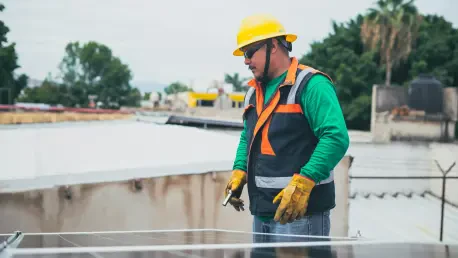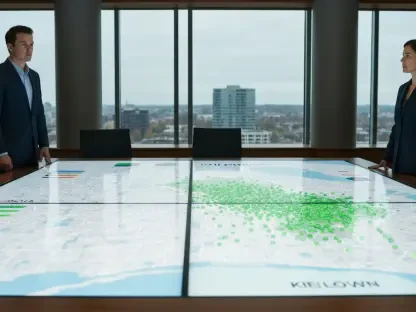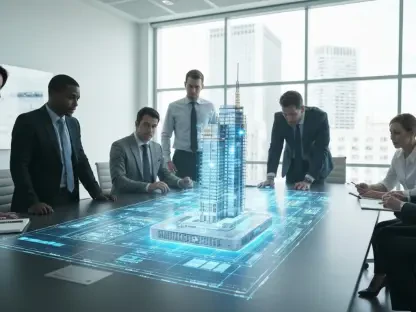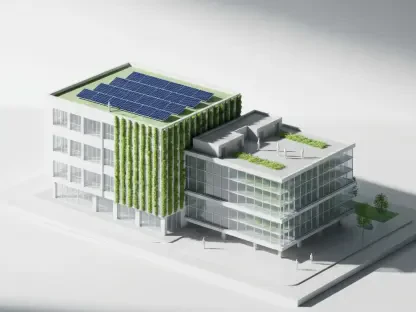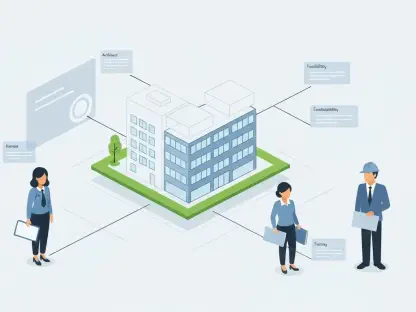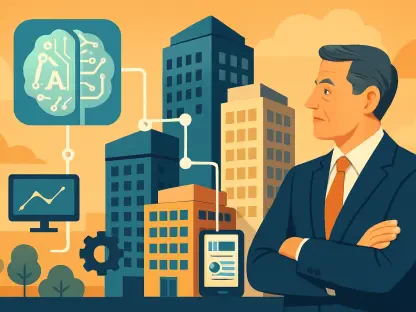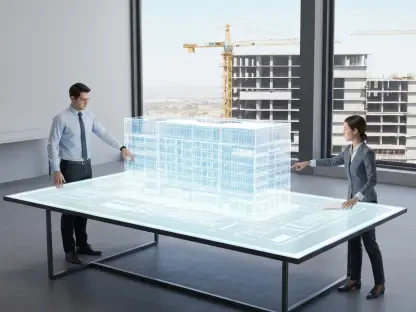The construction industry faces a myriad of challenges today, including aging infrastructure, extreme weather fueled by climate change, and escalating costs for materials and labor, prompting a critical need for innovation. To navigate this turbulent landscape, embracing advanced technologies such as artificial intelligence (AI) and climate modeling has emerged as a vital pathway to foster climate-resilient, innovative building solutions. Integrating these technologies not only addresses environmental challenges but also aligns with evolving legal expectations aimed at ensuring structural integrity and community resilience. This exploration also extends into assessing the risks and returns of using novel materials and processes, which could potentially redefine building standards and practices to withstand future adversities.
The Imperative for Innovation in Construction
Innovation is increasingly recognized as essential for survival and competitiveness within the construction industry, particularly given the climate-related challenges impacting structural planning and execution. Builders must adeptly incorporate innovative practices by employing the most reliable scientific methodologies, anticipating potential risks, and understanding the legal ramifications of each approach. Industry experts emphasize strategic adoption of innovation, underscoring the importance of planning beyond traditional compliance to adapt to climate resilience demands. The emphasis on climate modeling grows in significance, not only in managing extreme weather impacts but also in securing legal defensibility. As courts lean toward regarding climate modeling as a credible resource, builders are urged to document their design decisions meticulously, especially when the existing codes don’t account for evolving climate scenarios.
Moreover, substantial legal cases have reinforced the judiciary’s stance on using climate science in construction planning. These cases advocate for moving past the status quo in building code compliance, urging communities to embrace advanced resilience codes and engage in detailed pre-disaster planning. For instance, projects like the Battery Park City Resiliency Project demonstrate judicial encouragement in integrating sophisticated climate modeling into planning processes. This approach not only mitigates legal risks but also supports building designs that prioritize sustainable and resilient structures. This shift coincides with recommendations from agencies such as the Federal Emergency Management Agency (FEMA), advocating the need for communities to adopt comprehensive resilience practices to fortify against environmental challenges.
Balancing Risk with Novel Materials and Technologies
Achieving innovation in building also involves exploring new materials and processes, which, while promising, can introduce unique risks due to unestablished standards or lack of expertise. The adoption of AI and other advanced technologies in building design and execution is not immune to unforeseeable errors or claims, emphasizing thorough planning and meticulous execution. Risk management professionals underscore the significance of accounting for potential variables, clarifying contract responsibilities, consulting experts, and ensuring contingency plans for unforeseen complications. Despite these challenges, the intelligent application of AI can facilitate better efficiencies, precise modeling, and innovative construction methods, delivering substantial advancements in the sector.
However, a cautious sentiment prevails among developers regarding cutting-edge technology implementation. They are advised to elucidate the potential advantages and constraints of such technologies to clients early in the project’s lifespan. This engagement allows stakeholders to weigh their preferences, considering traditional methods against innovative approaches, encompassing potential risks and returns. Educating clients about technological benefits while acknowledging possible limitations can lay the groundwork for informed decision-making, ultimately integrating groundbreaking innovations responsibly into construction projects.
Navigating Future Challenges and Opportunities
Innovation is increasingly crucial in the construction industry, particularly given climate-related challenges that impact planning and execution. Construction professionals must skillfully incorporate innovative practices, leveraging reliable scientific methods, anticipating risks, and understanding legal implications. Experts stress adopting innovation strategically, going beyond traditional compliance to meet climate resilience needs. Climate modeling gains importance, not just for managing extreme weather impacts but also for ensuring legal defensibility. As courts view climate modeling as credible, builders must document design decisions thoroughly, especially when codes don’t cover evolving climate scenarios.
Significant legal cases support the use of climate science in planning, urging communities to surpass current code compliance and adopt advanced resilience practices. Projects like the Battery Park City Resiliency Project showcase judicial support for incorporating sophisticated climate modeling into planning. This approach reduces legal risks and supports sustainable designs. Recommendations from agencies like FEMA emphasize adopting comprehensive resilience practices to strengthen against environmental challenges, advocating for communities to prepare effectively.
